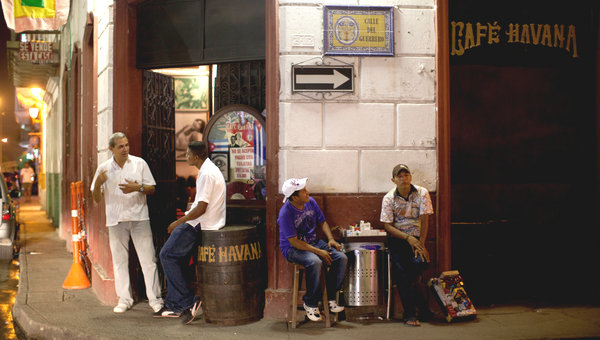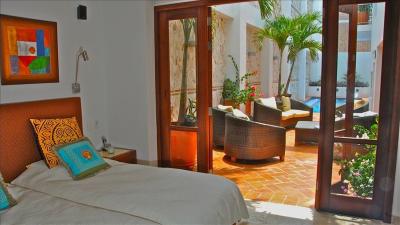A Cartagena Quarter Emerges

The Getsemaní district of Cartagena, Colombia, dangerous to visit until a few years ago, draws locals and tourists.
By NICHOLAS GILL
Published: February 24, 2012
TWO 20-something sisters sat in Malagana Café & Bar (Calle Tripita y Media 31-55; 57-5660-1360) in the Getsemaní district of Cartagena, Colombia, scanning playlists on their iPad. They weren't just passing time: the women multitask as D.J.'s, open mic night hosts, waitresses and accountants for this small restaurant and rooftop lounge, which they opened with their family late last year.
"Five years ago, we couldn't sit here like this," said one of the women, Diana Herrera Ordosgoitia. "It was just too dangerous. Most of the houses were in very bad shape; there were a lot of drugs and prostitution. Now this is becoming part of the past."
As Cartagena's old walled city is filling up with emerald shops and chain stores aimed at cruise-ship passengers, the once seedy neighborhood of Getsemaní has come into its own. A flurry of drinking dens, salsa clubs, tapas bars and boutique hotels like Casa Canabal and Casa Lola are being carved out of the faded 18th-century buildings in this district, which extends from the city walls to the San Felipe de Barajas Fort.
Ms. Ordosgoitia's small restaurant and rooftop lounge is just part of the influx. In September, the sculptor Emilio Hernández opened Casa Pájaro y Emilio Hernández, a combination art gallery, cafe, ice cream shop and wine bar (Calle de la Media Luna 10-113; 575-660-6801; casapajaroartegelatoycafe.blogspot.com). Its specialty is cholados (6,000 pesos, about $3.40 at 1,770 pesos to the dollar), a traditional shaved-ice snack from the Cauca Valley that uses condensed milk and a rainbow of exotic fruit syrup.
Around the corner at Café Havana (Calle de la Media Luna con Guerrero; 57-310-610-2324; cafehavanacartagena.com), the décor — high ceilings with low-hanging rickety fans, checkered tile floors, black-and-white photos of Latin jazz legends — calls to mind an earlier era. By nightfall, every seat at the horseshoe-shaped bar is usually taken, and by 11:30 p.m., when live performances start, customers sway on the limited free space they can find between tables and in front of the musicians.
Longstanding destinations in the neighborhood have also been affected by the area's transformation. The cobblestone Plaza de la Trinidad, which anchors a 17th-century church down the street, was known as a gathering spot for suspicious characters a decade ago. Now the plaza is filled with a mix of local families and visitors, who mingle as they tuck into chorizo or arepas from street carts, washing it down with cans of Aguila beer or fresh-squeezed exotic juices mixed with rum or aguardiente.
Another relative newcomer, the Bazurto Social Club (Avenia del Centenario Carrera 9, 30-42; 57-5664-3124; bazurtosocialclub.com) opened in 2009. There, the house band, the Bazurto All Stars, play cumbia, reggae and '70s era Afro-Colombian sounds like champeta amid Christmas lights and graffiti. The chef and owner, Jorge Escandón, named the restaurant and nightclub after a nearby marketplace. "We wanted to take the name of the market because this place embodies the joy of working people, the color of tropical fruits and the music of the people," he said.
Mr. Escandón said he had lured his regulars like the Nobel laureate Gabriel García Márquez from his other restaurant, La Cevicheria, to this new place, beyond the old city's stone walls.
"Now Getsemaní is better lit, more secure, and there are more tourist options," Mr. Escandón said. "It adds another element to the city."


